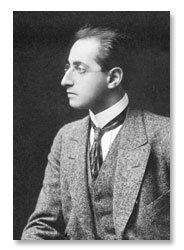Name Artur Bodanzky | Role Conductor | |
 | ||
Died November 23, 1939, New York City, New York, United States Education University of Music and Performing Arts, Vienna | ||
Artur bodanzky conducts wine women and song op 333
Artur Bodanzky (also written as Artur Bodzansky) (16 December 1877 in Vienna – 23 November 1939 in New York) was an Austrian-American conductor particularly associated with the operas of Wagner.
Contents
- Artur bodanzky conducts wine women and song op 333
- Act iii starke scheite schichtet mir dort marjorie lawrence cond artur bodanzky live 1936
- Career
- Conducting style and critical reception
- Family
- References

Act iii starke scheite schichtet mir dort marjorie lawrence cond artur bodanzky live 1936
Career
The son of Jewish merchants, Bodanzky studied the violin and composition with Alexander Zemlinsky Bodanzky then became conducting assistant to Gustav Mahler in Vienna, later going on to jobs in Berlin, the Neues Deutsches Theater in Prague (August 1907), where he was briefly a colleague of Otto Klemperer and Mannheim. In 1915 he emigrated to the United States to work for the Metropolitan Opera, being replaced at Mannheim by Wilhelm Furtwängler. He was head of German repertory at the Met, being accepted by Toscanini on the recommendation of Ferruccio Busoni. In 1921 he was engaged by the New York Philharmonic as a guest conductor. In 1928, Bodanzky announced his resignation from the Met and was replaced by Joseph Rosenstock. However, Rosenstock received such criticism in the press that he himself resigned almost immediately on medical advice, and Bodanzky was rehired, and remained at the Met until his death. He was approached by Thomas Beecham to conduct at Covent Garden in 1936, but his requested fee of 250 pounds for each performance was considered too high.
Conducting style and critical reception
When he was appointed to his position at Mannheim Bodanzky was praised as a "mature and diligent" conductor" with "only one deficiency: a certain heavy-handedness, a predilection for ritardando". However, later in his career at the Met Bodanzky became "notorious for his rapid tempi, particularly in Wagner". Bodanzky reputedly introduced more cuts in operas he prepared than many other contemporary conductors, and it was sometimes suggested that he was eager to finish the opera in time to play cards. H. L. Mencken criticized his abilities as a symphonic conductor, saying that "he gave an impression of being unfamiliar with what he was there to direct".
Many recordings survive of Bodanzky's Met broadcasts (some of which, for legal reasons, are not available in the USA). These include the very earliest Met broadcasts to survive, from 1933 and 1934, featuring substantial fragments of soprano Frida Leider in Walküre and Tristan. From the recordings, it becomes apparent that Bodanzky's tempi fluctuate greatly, sometimes very fast, sometimes quite slow. In this practice, he is not far from the live recordings of such contemporaries as Albert Coates, Fritz Reiner, and Furtwängler. As to the matter of cuts, it was the almost invariable practice in opera houses outside Bayreuth at that time. Bodanzky compares favorably with both Furtwängler and Reiner in this respect. In 1944, Szell gave a broadcast performance of Walküre which has been reissued on CD and which, as regards fast tempi and severity of cuts, is comparable to anything of Bodanzky's.
Frida Leider praised Bodanzky's "outstanding artistry" in her autobiography, written after Bodanzky's death. The influential critic and promoter Samuel Chotzinoff in his book, Toscanini: An Intimate Portrait, claimed that Toscanini did not rate Bodanzky at all highly even though he was saddened by his death; this appears to conflict with the claim that Toscanini recommended Bodanzky to the Met.
Family
Artur was the brother of the noted journalist and playwright Robert Bodanzky.
